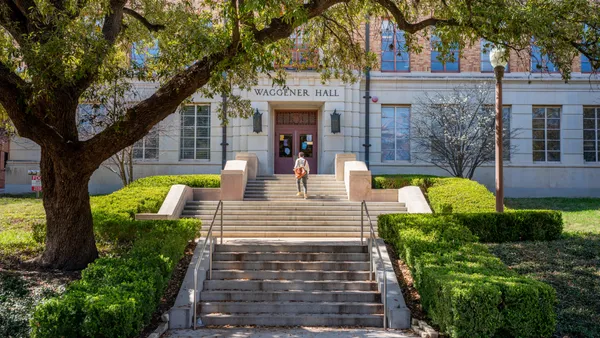Dive Brief:
- A survey of 2,711 instructors across U.S. higher education institutions by the Babson Survey Research Group showed that only 30% of faculty members reported being very aware or aware of open educational resources. In addition, nearly half of respondents said "there are not enough [free online] resources" for the subjects they teach and that it is “too hard to find what [they] need” from open online sources. On the other hand, 28% of respondents said they didn't use OER materials because they weren't high quality.
- Meanwhile, only 22% of faculty members reported they are very satisfied with the costs of their course materials, averaging to be around $97 for a required textbook, and only a third said 90% or more of their students get all the necessary materials.
- 71% of instructors said they were neutral about or preferred digital course materials, with faculty members consistently referring to OERs as a way to reduce costs to students — which shows a disconnect between adoption practices and actual preferences. Of note, the survey finds faculty members under the age of 35 are almost twice as likely to prefer digital materials than those over the age of 55.
Dive Insight:
A survey of students conducted by Wakefield Research showed about 85% of new college or university students do not buy a textbook by the first day of class. More than 90% of those students failed to purchase the materials due to costs, which is why many OER advocates argue free open materials provide low-cost solution. In fact, another survey from last year indicated that OER usage could potentially triple in the coming years, particularly with increased efforts from state lawmakers who support OER use.
Even though common sense on student budgets and classroom instruction quality and points toward more usage of OERs, results from the Babson survey shows a disconnect on the faculty end. One of the most significant challenges for OER adoption comes from faculty members, who often lack know of where to find legal, fair-use materials; some get frustrated and opt to keep traditional print materials. As a result, many institutions opt for the middle ground, supporting OER usage, while not requiring faculty to use them extensively.
A number of institutions have taken steps to rectify this disconnect between faculty knowledge — and even student knowledge — by creating OER libraries and buying into subscription services that solve copyright infringement worries. For instance, Notre Dame invested in a Digital Media Center, which consolidates digital initiatives and media creation from across campus into a single 2,000-square-foot hub. Elliott Visconsi, Notre Dame’s chief academic digital officer, told Education Dive strategies like these make it easier for faculty member to adapt:
“We know that we need to support our faculty as they embrace new and emerging pedagogies and the technologies that can really drive effective learning,” Visconsi said.












